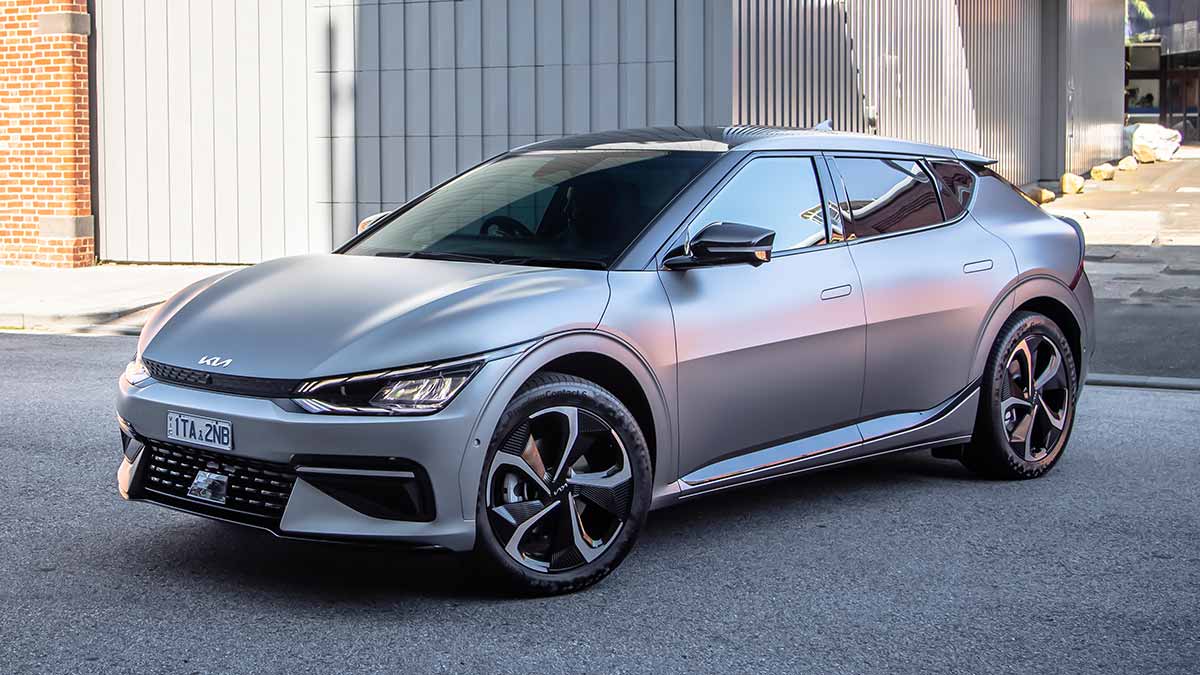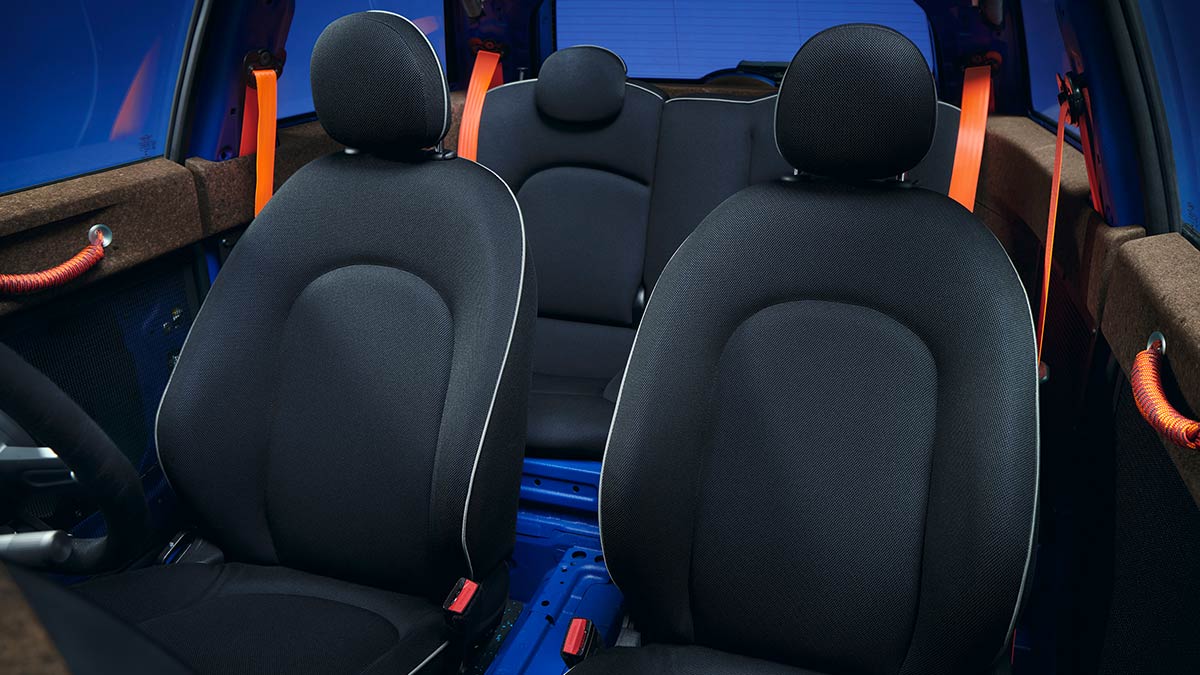The ninth-generation Toyota HiLux has arrived, bringing with it a futuristic forward exterior design, more safety and tech and the same rugged capability owners love. Will the updates tempt private buyers away from the Ford Ranger or are they just enough to keep fleets onside?
The new generation of eco-friendly, vegan cars

From using recycled plastics, mushroom leather, and rope door handles, mainstream car manufacturers are going vegan.
Leather and wood have long defined luxury motoring. The richness of the materials has traditionally been embraced as manufacturers infuse prestige into their wares.
But the rush to pack cars with old-style luxury finishes is waning.
Car makers are increasingly turning to recycled and sustainable materials as tastes evolve and the scowl of sustainability targets machines that have been criticised for their environmental impact.
Plastics, too, are evolving to recycled and sustainable alternatives, and the vegan car is a reality as buyers demand more eco-focused rides.
Sustainability mentality
Key to the modern push is sustainability, and many brands have targets to become CO2 neutral.
While Teslas produce no harmful emissions while driving, the company acknowledges the intense carbon emissions used in manufacturing.
From sourcing materials to bending metal and applying paint, there’s plenty of CO2 emitted in creating the world’s most environmentally friendly cars.
But the eco movement goes beyond greenhouse gases.
In 2019 Tesla made its vehicles vegan, removing all animal products from the interior.
The leather is the easy bit – as unconvincing as Tesla’s fake leather is – but sourcing glues without animal products is more of a challenge, one that requires innovative thinking and science.
À la mode
The push for fresh materials is often driven by the fashion industry.
Mini took it to the extreme by enlisting fashion guru Paul Smith to create the Strip concept. It came shortly after the brand committed to omitting leather from all future models as it works towards an EV-only future within a decade.
As hinted at in the name, the Strip does without many plastic trims, instead exposing the structure of the car. Door handles are made of climbing rope and there’s cork on the doors.
Such different thinking can spice up the interior.
In the quirky BMW i3, for example, there are components made from eucalyptus, hemp and kenaf (a type of hibiscus plant). As with many BMWs, olive leaf extract is used for colour in the leather.
Leather-free
There’s something about the feel and smell of leather that enhances the luxury experience. But most people would struggle to tell the difference from modern fake leather.
Instead of calling it vinyl, car makers rebrand it with names such as Artico, Sensatec and Nulux. Despite the convincing grain it has nothing to do with a cow and typically lasts longer than the real stuff.
While Rolls-Royce and Bentley are a long way from ditching real leather in their uber-luxury machines, others are open to change.
They’re in part being forced into it by younger buyers.
Volvo points out leather is a by-product of the meat industry and that “the sustainable bit you need to remove is not the car industry… it’s the eating of hamburgers”.
That’s happening, and so is an increasing focus on ethics.
“We’re finding our customers ethics are changing,” says Volvo design boss Robin Page. “This next generation are far more interested in modern materials that are sustainable and not connected with animals.”
But replacing leather with PVC or vinyl is arguably worse for the environment, prompting a deeper search for alternatives.
Land Rover design manager Martin Buffery describes PVC as a “truly evil material”, albeit one that’s cheap.
The challenge is finding an alternative that looks and feels premium and is durable. One option is mushroom leather as used by fashion brand Hermès.
It’s on the cards for Aston Martin, with design boss Marek Reichman saying “we will be there very, very soon”.
Porsche charges extra for its “leather-free” alternative on its all-electric Taycan, clearly positioning the new material as a premium over leather.
Fantastic plastic
Run your hands through the carpet of a modern Volvo XC40 Pure Electric or along the insides of the doors of the Kia EV6 and you may well be reconnecting with a plastic water bottle you drank from last year.
Recycled PET plastics are increasingly being used for interior components.
Audi’s much-hyped e-Tron GT electric sports sedan goes one step further, using fibres created from fishing nets and carpet waste.
And BMW showed how exotic reused plastic can be with the velvet-like finish on its i-Vision Circular concept.
It may seem fanciful that a shiny transparent bottle or fishing nets that have dredged the ocean can transform into fibres similar to those sourced from a sheep, but the technology is already here.
Less is more
Some parts on a car look set to be eliminated altogether in the push to reduce complexity and improve their environmental credentials.
In designing its i-Vision concept BMW removed the metal and plastic badges, instead replacing the famous roundel with laser etching directly into the metal.
And the hue of the car was not created from paint, but from heat treatment of the metal, not only reducing the cost of coating the car but also the environmental harm of the chemicals used and the energy required.
Land Rover design manager Martin Buffery says plastics will likely play a role in the production of vehicles for decades to come, such are its appealing properties: easily crafted, lightweight and cheap.
But he says the use of virgin plastics – manufactured from petrochemicals – is on the decline and a core focus for the brand.
“What we can do is eradicate either single-use plastics or virgin material,” he says.
And whereas recycled may once have denoted a cheaper alternative, it’s increasingly gaining marketing cachet.
In the BMW i-Vision concept, for example, the backs of the seats have recycled plastics with a finish similar to a terrazzo tile. It’s unique and refreshing in what is typically a sea of greys.
And in Volkswagen’s ID.Life EV concept wood chips are used as colour highlights in the final surface of the exterior paint.
All of which adds visual interest with a modern twist.
The information provided is general advice only. Before making any decisions please consider your own circumstances and the Product Disclosure Statement and Target Market Determinations. For copies, visit racv.com.au. As distributor, RACV Insurance Services Pty Ltd AFS Licence No. 230039 receives commission for each policy sold or renewed. Product(s) issued by Insurance Manufacturers of Australia ABN 93 004 208 084 AFS Licence No. 227678.











